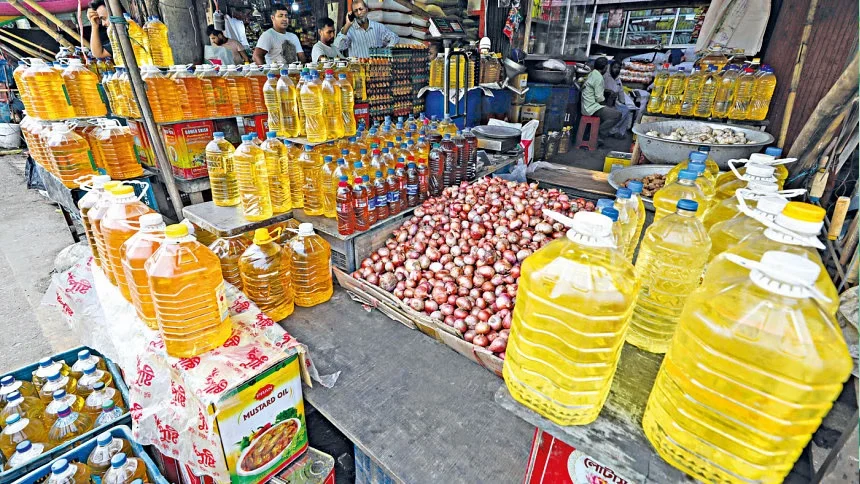Commodity prices to experience slight downturn in 2024 and 2025: World Bank
Share on:

Prices, however, are expected to remain above pre-pandemic levels
Commodity prices are projected to experience a slight downturn in 2024 and 2025 but are expected to remain above pre-pandemic levels, according to the World Bank.
Energy prices are expected to decline by 3 percent in 2024, as notably lower prices of natural gas and coal offset higher oil prices, followed by a further decline of 4 percent in 2025, wrote John Baffes, a senior agriculture economist of the Development Economics Prospects Group of the World Bank, and Kaltrina Temaj, a research analyst, in a blog on the website of the global lender.
Agricultural prices are expected to ease as well in this year and next amid improved supply conditions. Metal prices are set to remain steady in 2024, before rising slightly in 2025.
"Although the price forecasts assume no further conflict escalation, risks remain tilted to the upside, stemming from the possibility of conflict in the Middle East and its consequent impact on energy supplies," said the post.
Commodity prices fell 3 percent in the first quarter of 2024, driven by lower energy prices alongside relatively stable agriculture and metals prices. Energy prices declined 3 percent in 2024Q1, mostly in response to lower natural gas and coal prices.
However, oil prices exhibited significant volatility, responding to escalating tensions in the Middle East and a supply outlook that was tighter than anticipated.
Agriculture prices saw minimal change, with decreases in food and fertiliser prices balanced by a surge in beverage prices, attributed to supply shortages induced by adverse weather conditions. Meanwhile, metal prices remained generally unchanged during the quarter, with a decline in iron ore prices offsetting increases in other metal prices.
Brent crude oil prices surpassed $91 per barrel in early April, driven by escalating geopolitical tensions and further production cuts by OPEC-plus. Oil prices have experienced considerable volatility amid intensifying concerns about the conflict in the Middle East, tight supply conditions in response to OPEC-plus production cuts, and a strengthening of global industrial activity.
Recent reductions in US inventories, coupled with revised projections from the International Energy Agency shifting from a predicted surplus to a modest deficit, have further bolstered market confidence.
Geopolitical developments in the Middle East and disruptions in Russia's refinery sector since mid-March have heightened concerns about broadening instability in oil supplies. Oil prices are anticipated to average $84/bbl in 2024 (up from $83/bbl in 2023), before tapering to $79/bbl in 2025.
Natural gas prices plummeted in 2024Q1, reaching levels almost 40 percent lower than a year earlier. The European benchmark fell by 35 percent in the first quarter of 2024, driven by high inventories, reversing gains seen in the previous quarter.
Similarly, the US natural gas price fell by 22 percent in the quarter, reflecting robust domestic production and subdued demand attributable to mild weather conditions. In contrast, Japan's LNG benchmark registered a modest 4 percent increase quarter-on-quarter.
Natural gas prices are forecast to remain significantly depressed in 2024 due to ample global storage levels and ongoing adjustments in trade patterns, particularly concerning Russia. However, a reversal is anticipated in 2025, with prices expected to rise as a result of an uptick in the US benchmark, propelled by increased LNG exports facilitated by the commissioning of new terminals.
Agriculture prices edged up in early April, driven by a surge in cocoa and Robusta coffee prices. Food commodity prices declined by 4 percent in 2024Q1. Food prices are expected to experience a marginal decline in 2024 and 2025, buoyed by favorable supplies and moderating El Niño.
The blog said food insecurity remains a pressing issue, particularly in regions affected by conflict. Armed conflicts, economic shocks, and extreme weather events are the principal factors driving food insecurity.
The recent escalation of conflict in the Middle East and its ripple effects have intensified food insecurity, especially in conflict-ridden areas. The number of people experiencing acute food insecurity has risen sharply in recent years, to more than 282 million people in 2023 from 100 million in 2018.
Commodity price forecasts are subjected to numerous risks, with the primary concern being the potential for further escalation of conflicts. Heightened geopolitical tensions have already exerted upward pressure on some key commodity prices.
Gold prices—a barometer of demand for safe-haven assets—reached new record highs in April. A widening of conflict escalation in the Middle East poses the key upside risks to most commodity prices. Should this conflict escalate further, it could result in disruptions to energy supplies, which are pivotal for the production and transportation of other commodities.
Additionally, there are other factors contributing to upside risks, such as diminished US energy supply and disruptions caused by adverse weather and climate conditions, particularly impacting agriculture commodities. Conversely, the main downside risks to the forecast include the potential for increased OPEC-plus supply and weaker-than-anticipated global economic growth, the two WB economists said.

